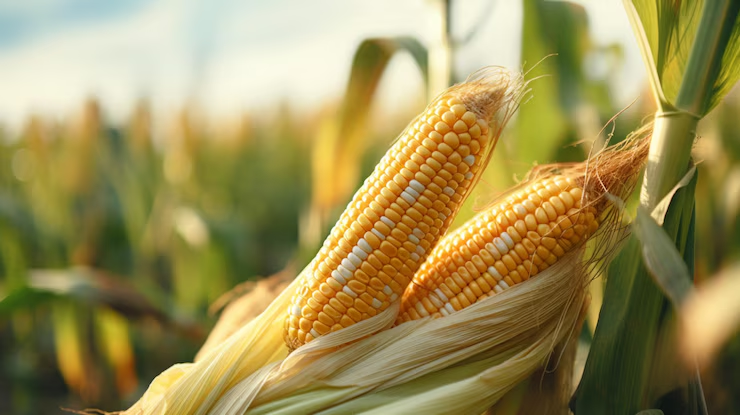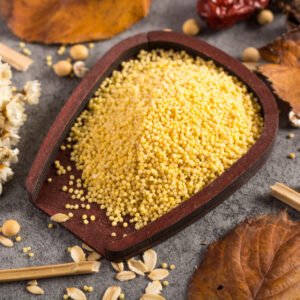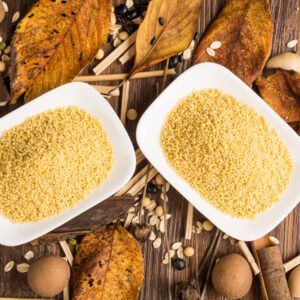In the vast landscape of global agriculture, few crops command as much respect and versatility as maize. From the ancient civilizations of Mesoamerica to modern industrial applications, this remarkable grain has shaped human civilization for millennia. Today, maize stands as one of the world’s most important cereal crops, feeding billions while serving countless industrial purposes that extend far beyond the dinner table.
Whether you know it as corn, maize, or by its scientific name Zea mays, this golden grain represents far more than a simple agricultural commodity. It’s a cornerstone of food security, a driver of economic prosperity, and an essential raw material for countless industries worldwide. Understanding maize and its multifaceted applications reveals not just the story of a crop, but the interconnected nature of modern agriculture, industry, and daily life. As a trusted White Maize Corn Manufacturer, Supplier & Exporter in India, we recognize the vital role this crop plays in meeting global demand across food, feed, and industrial sectors.
Understanding Maize: The Foundation of Global Agriculture
What Is Maize?
Maize, scientifically known as Zea mays, belongs to the grass family Poaceae and represents one of humanity’s most successful agricultural achievements. This annual cereal grain originated in central Mexico approximately 10,000 years ago through the domestication of its wild ancestor, teosinte. The transformation from a small, hard-seeded wild grass to the large-kerneled crop we know today represents one of the most dramatic examples of plant breeding in human history.
The maize plant typically grows between 1-4 meters in height, featuring a sturdy stalk that supports large leaves and produces distinctive ears containing hundreds of kernels arranged in rows. Each kernel represents a complete seed capable of producing a new plant, making maize both a food source and a means of propagation. The plant’s remarkable adaptability has allowed it to thrive across diverse climatic conditions, from tropical regions to temperate zones, making it truly a global crop.
Botanical Characteristics and Varieties
Modern maize cultivation encompasses numerous varieties, each developed for specific purposes and growing conditions. The primary categories include dent corn, characterized by its distinctive dimpled kernels and high starch content, making it ideal for animal feed and industrial processing. Flint corn, with its hard outer shell, provides excellent storage capabilities and serves as a foundation for many traditional foods.
Sweet corn, the variety most familiar to consumers, contains higher sugar content and is harvested while kernels remain tender. Popcorn represents another specialized variety with kernels that expand dramatically when heated due to their unique moisture and starch composition. Waxy corn, high in amylopectin starch, serves specialized industrial applications requiring specific starch properties.
The genetic diversity within maize varieties continues expanding through both traditional breeding techniques and modern biotechnology. This diversity ensures adaptation to changing environmental conditions while meeting evolving human needs for food, feed, and industrial applications.
Historical Significance and Global Spread
Ancient Origins and Cultural Impact
Archaeological evidence traces maize domestication to the Balsas River valley in Mexico, where indigenous peoples gradually transformed teosinte into recognizable maize through selective breeding over thousands of years. This agricultural revolution enabled the development of complex civilizations throughout Mesoamerica, including the Maya, Aztec, and Inca empires, all of which considered maize sacred and central to their cultural identity.
The crop’s journey beyond the Americas began with European colonization in the 15th and 16th centuries. Spanish and Portuguese explorers recognized maize’s potential and introduced it to Europe, Africa, and Asia. Within decades, maize cultivation spread across continents, adapting to local conditions and becoming integrated into regional food systems and cultural practices.
Modern Global Production
Today, maize ranks as the world’s most widely grown grain crop, with annual production exceeding one billion tons globally. The United States leads production, followed by China, Brazil, and Argentina, collectively accounting for over 70% of global output. This massive production scale reflects maize’s fundamental role in modern agriculture and its importance to global food security.
The crop’s success stems from its remarkable yield potential, adaptability to diverse environments, and efficient resource utilization. Modern hybrid varieties can produce substantially more grain per hectare than traditional crops, making maize cultivation economically attractive for farmers worldwide. Advanced breeding programs continue developing varieties with enhanced yield potential, disease resistance, and stress tolerance.
Nutritional Profile and Health Benefits
Essential Nutrients in Maize
Maize provides significant nutritional value as a source of carbohydrates, proteins, and essential micronutrients. A 100-gram serving of yellow maize contains approximately 365 calories, primarily from carbohydrates, along with 9 grams of protein and 4.7 grams of dietary fiber. The grain supplies important B-vitamins, including thiamine, niacin, and folate, which support energy metabolism and nervous system function.
Yellow maize varieties contain carotenoids, particularly beta-carotene and zeaxanthin, which provide antioxidant properties and support eye health. These compounds give yellow maize its characteristic color while contributing to its nutritional value. The fiber content in maize supports digestive health and helps regulate blood sugar levels, making it a valuable component of balanced diets.
Addressing Nutritional Challenges
While maize serves as a staple food for millions globally, its nutritional profile presents both opportunities and challenges. The protein in maize lacks certain essential amino acids, particularly lysine, which can lead to protein quality concerns when maize dominates dietary intake. However, traditional food preparation methods, such as nixtamalization practiced in Mexico, enhance protein quality and improve mineral availability.
Modern biofortification efforts focus on developing maize varieties with enhanced nutritional profiles, including increased protein quality, vitamin content, and mineral density. Quality Protein Maize (QPM) varieties contain higher lysine and tryptophan levels, addressing protein quality concerns in regions where maize serves as a primary food source.
Primary Uses of Maize in Food Industry
Direct Human Consumption
Maize consumption patterns vary significantly across global regions, reflecting cultural preferences and economic factors. In many African and Latin American countries, maize serves as a primary staple food, consumed in various forms including porridge, tortillas, and polenta. Sweet corn consumption predominates in developed countries, where it’s enjoyed fresh, canned, or frozen as a vegetable side dish.
Traditional maize-based foods demonstrate remarkable diversity and cultural significance. Mexican tortillas, Italian polenta, American cornbread, and African ugali represent just a few examples of how different cultures have incorporated maize into their culinary traditions. Each preparation method highlights specific properties of maize while creating distinctive flavors and textures.
Processed Food Applications
The food processing industry utilizes maize extensively through various transformation processes that create diverse products. Corn starch extraction produces a versatile ingredient used in baking, confectionery, and food manufacturing as a thickening agent, stabilizer, and texture modifier. High fructose corn syrup, derived from processed corn starch, serves as a sweetener in beverages, baked goods, and processed foods.
Corn oil extraction from the germ provides a neutral-flavored cooking oil with high smoke point properties ideal for frying and baking applications. The oil’s stability and favorable fatty acid profile make it popular for both home cooking and commercial food production. Additionally, various corn-based snack foods, breakfast cereals, and convenience products demonstrate maize’s versatility in meeting consumer preferences for convenient, flavorful foods.
Industrial Applications and Manufacturing
Biofuel Production
Maize plays a crucial role in renewable energy production, particularly through ethanol manufacturing. Corn ethanol production involves fermenting corn starch to produce alcohol, which is then blended with gasoline to create cleaner-burning fuel alternatives. The United States produces billions of gallons of corn ethanol annually, representing a significant portion of the country’s renewable fuel supply.
The ethanol production process generates valuable co-products, including distillers’ dried grains with solubles (DDGS), which serve as high-protein animal feed. This integrated approach maximizes resource utilization while creating multiple revenue streams from a single crop. Ongoing research focuses on improving ethanol production efficiency and developing advanced biofuels from corn residues and cellulosic materials.
Chemical and Pharmaceutical Industries
Corn-derived products serve numerous industrial applications beyond fuel production. Corn starch modification creates specialized materials for paper manufacturing, textile processing, and adhesive production. The pharmaceutical industry utilizes corn starch in tablet formulation, while biodegradable plastics incorporate corn-based polymers as environmentally friendly alternatives to petroleum-based materials.
Industrial fermentation processes use corn sugars to produce various chemicals, including citric acid, amino acids, and antibiotics. These applications demonstrate maize’s role in biotechnology and sustainable manufacturing practices that reduce dependence on non-renewable resources.
Animal Feed and Livestock Industry
Nutritional Value for Livestock
Maize represents the primary energy source in animal feed formulations worldwide, providing easily digestible carbohydrates that support growth and milk production in livestock. The grain’s high energy density, palatability, and consistent quality make it ideal for feeding cattle, swine, poultry, and aquaculture species. Feed formulations typically combine corn with protein sources, vitamins, and minerals to create balanced diets meeting specific animal nutritional requirements.
The digestibility of corn varies among animal species, with ruminants like cattle effectively utilizing whole kernels, while monogastric animals such as pigs and poultry benefit from ground corn that enhances nutrient availability. Processing methods including steam flaking, rolling, and fermentation can improve feed efficiency and animal performance while reducing feed costs.
Economic Impact on Livestock Production
Corn prices significantly influence livestock production economics, as feed costs represent the largest expense for most animal operations. The availability and affordability of corn directly impact meat, milk, and egg prices, creating interconnections throughout the food supply chain. Efficient corn utilization in animal feeding systems contributes to affordable protein production for human consumption.
Livestock producers continuously evaluate corn alternatives and supplementary feeds to optimize production efficiency while managing costs. This dynamic relationship between corn supply, pricing, and livestock production demonstrates the crop’s fundamental importance to global protein production systems.
Emerging Uses and Future Applications
Sustainable Materials Development
Research and development efforts increasingly focus on utilizing corn for sustainable material production that can replace petroleum-based products. Corn-based bioplastics offer biodegradable alternatives for packaging, disposable items, and durable goods. These materials maintain functionality while reducing environmental impact through renewable resource utilization and improved end-of-life disposal options.
Advanced material applications include corn-based foams, films, and composites that serve construction, automotive, and consumer product industries. The development of these materials supports circular economy principles while creating new markets for corn production.
Biotechnology and Innovation
Modern biotechnology applications utilize corn as a platform for producing pharmaceuticals, enzymes, and specialty chemicals through genetic modification and bioprocessing techniques. These applications represent high-value uses that can provide premium returns for specialized corn production while advancing medical and industrial capabilities.
Precision agriculture technologies optimize corn production through data-driven approaches that improve yield potential while reducing environmental impact. These innovations ensure continued corn availability for expanding applications while maintaining sustainable production practices.
Environmental Considerations and Sustainability
Resource Efficiency and Conservation
Modern corn production increasingly emphasizes resource efficiency and environmental stewardship through adoption of conservation practices. No-till farming methods reduce soil erosion while maintaining soil health and carbon sequestration. Precision application of fertilizers and pesticides minimizes environmental impact while maintaining productivity levels necessary for global food security.
Water management practices, including drought-tolerant varieties and efficient irrigation systems, address water scarcity concerns while ensuring consistent corn production. These approaches demonstrate agriculture’s evolution toward more sustainable practices that balance productivity with environmental protection.
Climate Change Adaptation
Climate change presents both challenges and opportunities for corn production, requiring adaptive strategies that maintain productivity under changing environmental conditions. Plant breeding programs develop varieties with enhanced stress tolerance, including drought resistance, heat tolerance, and improved disease resistance.
Carbon sequestration potential in corn production systems offers opportunities to mitigate climate change impacts while maintaining agricultural productivity. Cover cropping, reduced tillage, and integrated crop management systems can enhance soil carbon storage while supporting sustainable corn production.
Economic Impact and Global Trade
Market Dynamics and Pricing
Corn markets operate on a global scale, with prices influenced by production levels, weather conditions, policy decisions, and demand from various sectors including food, feed, and fuel. Price volatility affects farmers, processors, consumers, and livestock producers, creating ripple effects throughout interconnected agricultural and food systems.
International trade in corn connects producers and consumers across continents, with major exporting countries supplying regions with limited production capacity or specific quality requirements. Trade policies, transportation infrastructure, and quality standards influence market access and competitiveness in global corn markets.
Economic Development and Rural Communities
Corn production supports rural economies through direct farming operations, processing facilities, transportation services, and related businesses. The crop’s economic impact extends beyond primary production to include equipment manufacturing, seed development, agricultural services, and food processing industries that create employment and economic activity in rural areas.
Value-added processing creates opportunities for rural economic development while capturing additional value from corn production. These activities support community sustainability while enhancing farmer incomes through vertical integration and local processing capabilities.
Conclusion: The Future of Maize in Our World
Maize continues to evolve as a cornerstone of global agriculture, food security, and industrial development. Its remarkable adaptability, nutritional value, and versatility ensure its continued importance across a wide range of applications—from traditional foods to advanced materials and renewable energy. The crop’s journey from ancient Mesoamerican domestication to a modern global commodity highlights humanity’s deep-rooted relationship with agriculture and our drive to create sustainable solutions for feeding a growing population. At CMS Industries, we are proud to contribute to this journey by delivering innovative agricultural products and solutions that support sustainable maize cultivation and global food systems.
Looking ahead, maize will play increasingly important roles in addressing climate change, developing sustainable materials, and supporting food security for a growing global population. Continued innovation in breeding, production practices, and utilization technologies will expand maize applications while maintaining environmental stewardship and economic viability.
The future of maize lies not just in producing more grain, but in producing it more sustainably while developing new applications that support human needs and environmental health. As we face global challenges including climate change, resource scarcity, and population growth, maize stands ready to contribute solutions through its remarkable versatility and our continued innovation in its production and utilization.
Understanding maize and its uses reveals the interconnected nature of modern agriculture, industry, and daily life. From the kernel to the global marketplace, maize represents both agricultural achievement and future potential, continuing its role as one of humanity’s most important crops while adapting to meet emerging challenges and opportunities in our changing world.
Frequently Asked Questions
Q1: What is the difference between corn and maize?
Corn and maize refer to the same plant species (Zea mays). “Maize” is the internationally accepted term, while “corn” is commonly used in North America. Both terms describe the same versatile grain crop used worldwide.
Q2: How is maize used in industrial applications?
Maize serves numerous industrial purposes including ethanol biofuel production, biodegradable plastic manufacturing, pharmaceutical tablet production, paper processing, and chemical fermentation. These applications utilize corn starch, oil, and sugars as renewable raw materials.
Q3: What are the main nutritional benefits of eating maize?
Maize provides carbohydrates for energy, dietary fiber for digestive health, B-vitamins for metabolism, and antioxidants like beta-carotene. Yellow varieties contain carotenoids supporting eye health, while providing essential nutrients for balanced diets.
Q4: Which countries produce the most maize globally?
The United States leads global maize production, followed by China, Brazil, and Argentina. These four countries collectively produce over 70% of the world’s maize supply, with the US alone contributing approximately 350 million tons annually.
Q5: How does maize contribute to animal feed production?
Maize serves as the primary energy source in livestock feed formulations worldwide, providing digestible carbohydrates for cattle, swine, poultry, and aquaculture. It’s combined with proteins, vitamins, and minerals to create balanced animal nutrition programs.





